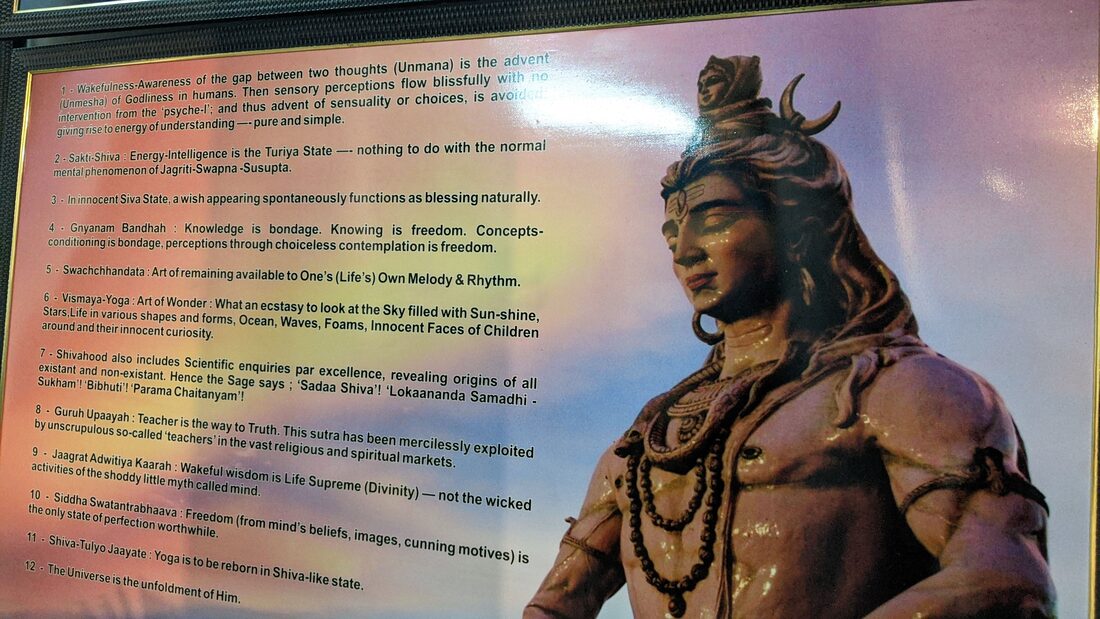|
MahaShivratri – the festival of auspiciousness
This universe is not eternal. It is created; it is sustained for a certain period and it is destroyed to be recreated. The fact remains, everything in this universe is mortal. Modern physicists have also proved that the whole creation comes out of nothing and will go into nothingness. Widespread emptiness is the basis of existence and the fundamental property of the universe. ... This vast emptiness is what we call Shiva. The celebration and remembrance of Shiva is done on Mahashivratri. Mahashivratri is one of the major festivals in Hinduism, and this festival is solemn and marks a remembrance of "overcoming darkness and ignorance" in life and the world. Scientific relevance: Astrologically, the gravitational pull of the Moon is maximum on the new Moon and full moon day, resulting in the rise of full body fluid in an upward direction towards the brain. Maha Shivaratri is celebrated on 14th day/chaturdashi of Krishna paksha of magha month. Around Maha Shivaratri, the Sun and the Moon are aligned in such a way that the Vata component of our body gets activated. The activity is maximum during this time of the year. As per Ayurveda, Vata is one of the three constituents of the body, the other two being Pitta and Kapha. Anything related to movement in the body has a direct connection with Vata. Vata directly impacts the following –
Medically, the night of Shivaratri is the best time for us to balance the Vata in ourselves. As Yogis, we identify 5 types of Vata - Prana Vata (responsible for inhalation), Apana Vata (responsible for removal of waste), Udana Vata (responsible for exhalation), Samana Vata (responsible for consolidation) and Vyana Vata (responsible for locomotion). If one performs the Vata Kriya during the week of Maha Shivaratri, or at least on that one day, all the above Vatas as cleansed and lubricated. A person with a balanced and cleanses Vata will exhibit a positive behaviour and extrovert, happy, clam and have presence of mind. Fasting on Maha Shivaratri make you more stable to combat with the effect of moon (religiously/ and scientifically as it is said that moon much like sea effects state of mind). When celebrated: Maha Shivratri is one of the most auspicious Hindu festivals celebrated in honour of Lord Shiva. It falls on the Chaturdashi Tithi during Krishna Paksha. While Shivratri occurs every month, Mahashivratri is the great night of Shiva that occurs only once a year in the month of Magha. How Celebrated:
Why Celebrated – Spiritual Significance: Different legends describe the significance of Maha Shivaratri. According to one legend, this is the night when Shiva performs the heavenly dance of creation, preservation and destruction. The chanting of hymns, the reading of Shiva scriptures and the chorus of devotees joins this cosmic dance and remembers Shiva's presence everywhere. According to another legend, this is the night when Shiva and Parvati got married. A different legend states the offering to Shiva icons such as the Linga is an annual occasion to get over past sins if any, to restart on a virtuous path and thereby reach Mount Kailasha and liberation. Shiva Purana, chapter 6 has explained the creation of universe. Brahma ji explained to sages that at the ti me of Great Dissolution, all the mobile and immobile objects of the world were dissolved and no celestial body existed. No demarcation of the day and the night existed. There was no fire, no wind, no earth and no water. There was no unmanifest primordial being. The whole firmament was one complete void. The manifest form of the formless Being is Shiva. Isvara then created the physical form Shakti from his body. This Shakti is called by various names - Pradhana, Prakriti, Maya, Guṇavati, Para. Shakti is the mother of Buddhi Tattva (The cosmic Intelligence), the mother of material world. In Vidhyeshwara Samhita (First Samhita) of Shiva Purana, it is mentioned that in the first cosmic cycle (kalpa) Shiva assumed huge column of fire to decide the superiority between Brahma ji and Vishnu ji. But neither of two could find the upper or lower end of the huge column. Finally, Shiv ji came out of the column of fire and took visible form and declared, “O dear Vishnu, I am pleased with you, as you strictly adhered to the truth in spite of your desire to be supreme. Hence among the general public you will have footing equal to mine. You will be honoured likewise. Hereafter, you will have separate from me having separate temple, installation of idols, festivals and worship.” Brahma and Vishnu, both adored Shankara. Shiv Ji said, “he is delighted with the worship on this holy day. Henceforth this day will be famous as Shivratri. He who performs the worship of my phallic emblem and embodied image on this day will be competent to perform the task of creation and maintenance. The devotees who will observe fast on Shivratri during day and night, he shall restrain sense organs. He shall adore to the extent of his strength. He shall not deceive anyone. Fasting, worship of phallic emblem and festivities on the day bring ample results including liberation.” Those with worldly ambitions see that day as the day Shiva conquered all his enemies.
0 Comments
|
Archives
March 2022
Categories |

 RSS Feed
RSS Feed